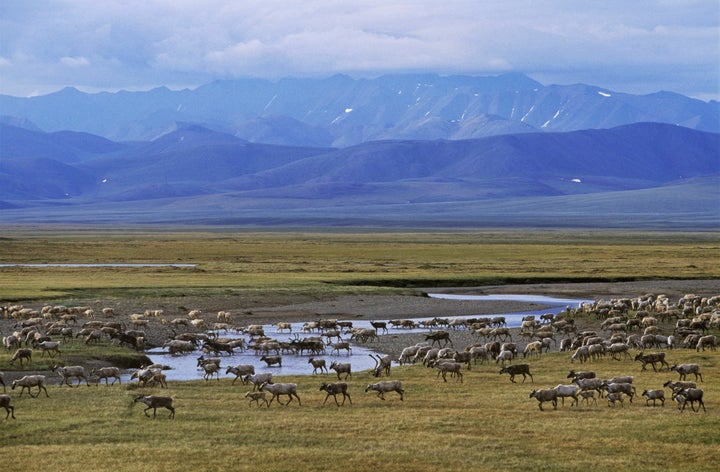The Trump administration on Thursday took a significant step toward opening Alaska’s fragile Arctic National Wildlife Refuge to oil drilling with a report detailing potential environmental impacts on the unspoiled landscape.
The Interior Department issued a lengthy draft environmental impact statement exploring three alternatives that would make available for lease between 66 and 100 percent of the refuge’s 1.5 million-acre coastal plain. A fourth option would be to not allow oil and gas leasing, but the agency notes that that route would not comply with a provision in the tax law Republicans passed last year.
Republicans have long been fighting to open the refuge’s coastal plain, also known as the 1002 Area. The GOP tax law passed by Congress a year ago this week included a provision, introduced by Sen. Lisa Murkowski (R-Alaska), that requires Interior Secretary Ryan Zinke to approve at least two lease sales for drilling — each covering no less than 400,000 acres.
In a statement Thursday, the outgoing agency chief applauded President Donald Trump for “giving Alaskans a voice again.”
“An energy-dominant America starts with an energy-dominant Alaska, and among the scores of accomplishments we have had at Interior under President Donald J. Trump, taking these steps toward opening the 1002 section of Alaska’s North Slope stands out among the most impactful toward bolstering America’s economic strength and security,” Zinke said.

The document will be published in the Federal Register on Dec. 28, kicking off a 45-day public comment period. Lease sales could be held as early as next year.
Environmentalists have blasted the administration for rushing to approve leases. Jamie Williams, the president of conservation nonprofit The Wilderness Society, said in a statement Thursday that the review process is “reckless” and called on Congress to overturn the fossil-fuel-friendly provision.
“Of all of the Trump administration’s conservation rollbacks, the drive to sell off one of America’s wildest places for dirty, high-risk oil-drilling ranks among the worst,” he said. “Americans have no desire to drill the Arctic Refuge, and this action is pure pandering to special interests in the oil lobby.”
The refuge, often described as “America’s Serengeti,” covers more than 19 million acres in northeastern Alaska. The region is home to polar bears, caribou, moose and hundreds of species of migratory birds, and for decades the 1002 Area has been a battleground between energy companies and conservationists.
Scientists, environmentalists, a bipartisan group of former Interior Department officials and a group of Republican lawmakers have all warned against opening this remote wilderness. And experts at the U.S. Fish and Wildlife Service voiced concern that initial seismic surveys would pose a threat to denning polar bears, as Mother Jones reported this month.
The environmental impact statement comes on the heels of an analysis by The Wilderness Society that finds the administration’s economic projection for oil and gas development in the refuge is “a pipe dream that uses bogus numbers.”
The Congressional Budget Office and the Trump administration have estimated that the lease sales would generate between $1.1 billion and $1.8 billion in federal revenues over a decade ― projections that have been widely disputed.
An analysis by the left-leaning Center for American Progress found that the U.S. government would likely collect closer to $37.5 million over 10 years.
